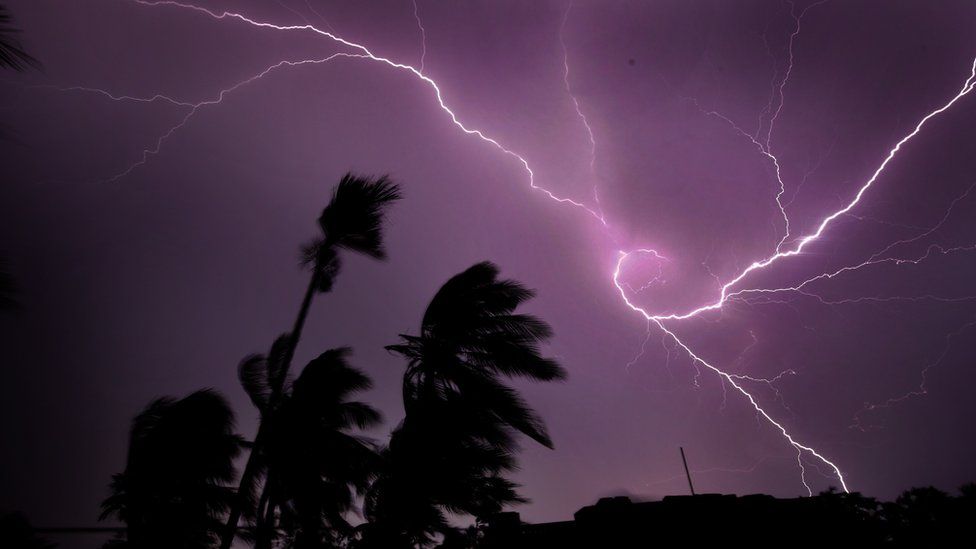Lightning kills more than 100 in northern India
- Published

More than 100 people in northern India have been killed by dozens of lightning strikes across two states in recent days, officials say.
The disaster management team in Bihar state said 83 were killed there, while another 20 were in hospital with injuries.
At least 20 more people are reported dead in neighbouring Uttar Pradesh.
Lightning strikes are common in India during heavy monsoon rains.
Meanwhile the rain and thunderstorms have caused widespread damage to trees and property.
The authorities have warned residents to be vigilant and stay indoors, as meteorologists forecast more bad weather.
Prime Minister Narendra Modi said relief efforts were under way and expressed condolences to the victims' families.
Helen Willetts explains why lightning strikes are so deadly in India
Bihar's Disaster Management Minister Lakshmeshwar Rai told AFP this was one of the highest tolls from lightning the state had recorded in recent years. More than half the deaths were in the state's northern and eastern districts, he said.
In Uttar Pradesh most of the deaths occurred in Deoria district close to the Nepal border and the holy city of Prayagraj, authorities said.
More than 2,300 people were killed by lightning in India in 2018, according to the National Crime Records Bureau and at least 2,000 people have died in lightning strikes every year since 2005.
One of the reasons cited for the high number of deaths is the large number of people working outdoors in India compared to other parts of the world, which makes them more vulnerable.
In 2018 the southern Indian state of Andhra Pradesh recorded 36,749 lightning strikes in just 13 hours.
Safety tips when lightning strikes
- Seek shelter inside a large building or a car
- Get out of wide, open spaces and away from exposed hilltops
- If you have nowhere to shelter, make yourself as small a target as possible by crouching down with your feet together, hands on knees and head tucked in
- Do not shelter beneath tall or isolated trees
- If you are on water, get to the shore and off wide, open beaches as quickly as possible
Source: Royal Society for the Prevention of Accidents